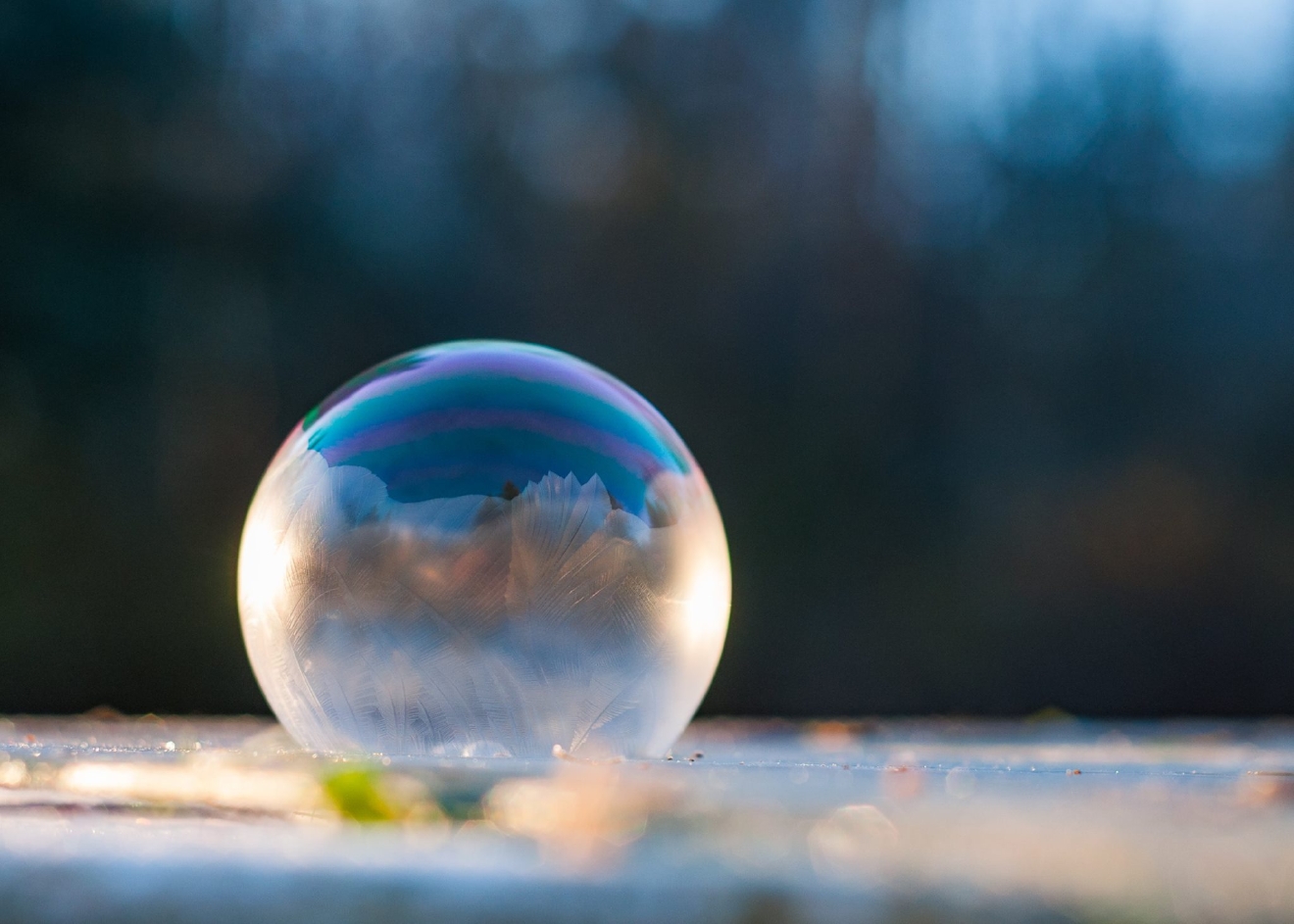

Because the temperatures are so cold, you need to plan everything in advance because you can’t spend that much time in these temperatures trying to guess what you are going to do next. In preparation for shooting bubbles, the key questions before you start are WHERE, WHAT, HOW and WHEN. Ingredients to make frozen bubble images The 3 W’s and 1 H The main ingredients you need access to are water, dish soap, glycerine, and some sugar. By adding a small number of sugar crystals, the bubbles will show crystal patterns in the bubble walls as they freeze. By adding glycerine or corn syrup, you make the bubbles stronger. In warm weather, soap and water are all you require for making lots of bubbles, but at colder temperatures, the soap film needs to be stronger. The bubbles stay together based upon the surface tension (the tendency to stick together) of the soap film, but the film is, in general, very thin. As the water evaporates, the bubble eventually bursts.

When you blow the bubbles through a wand or a straw, the air you introduce expands the inner film layer to create the bubble. Bubbles are made up of two soap films – inside layer and outside layer – holding and trapping a layer of water between them to form the bubble. They seem very simple, but the science behind them is quite complicated. Bubbles on a bubble wand The science of bubblesīubbles are common phenomena that kids love playing with.


 0 kommentar(er)
0 kommentar(er)
